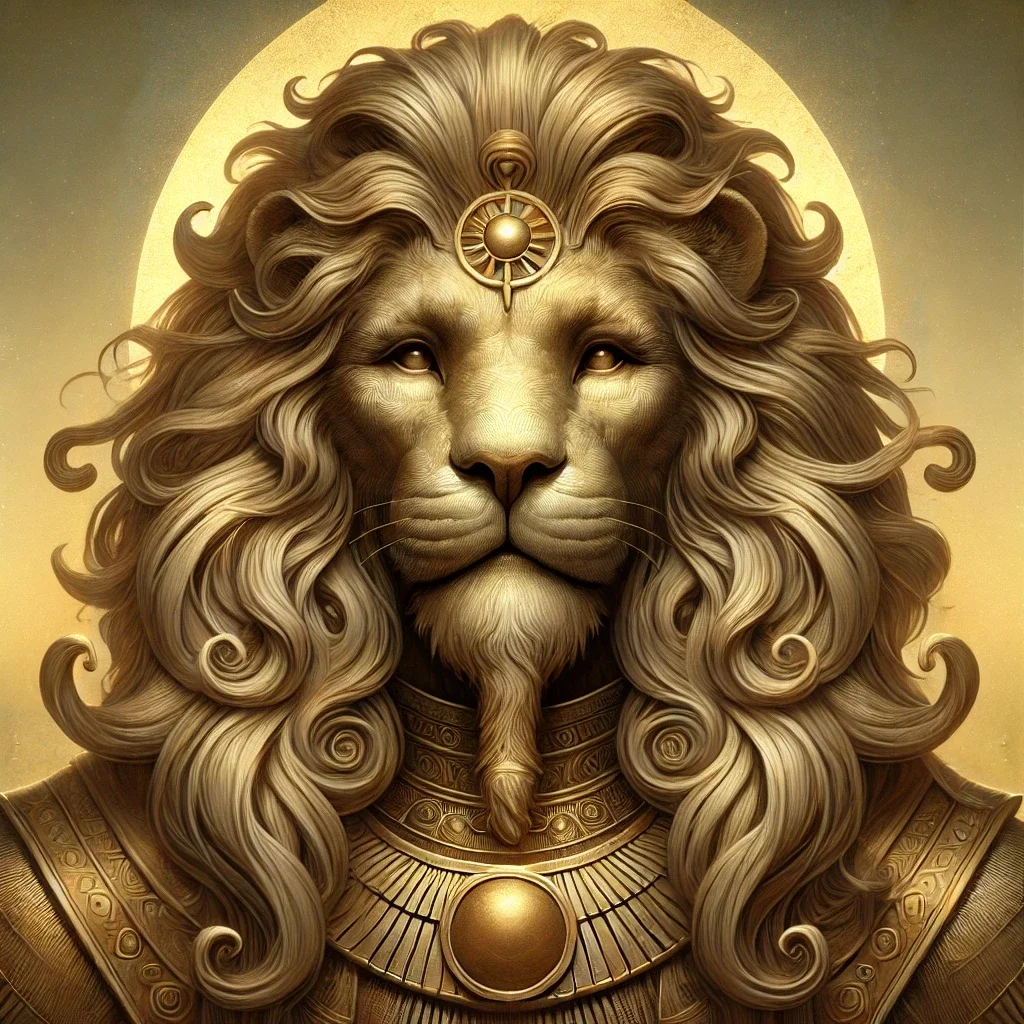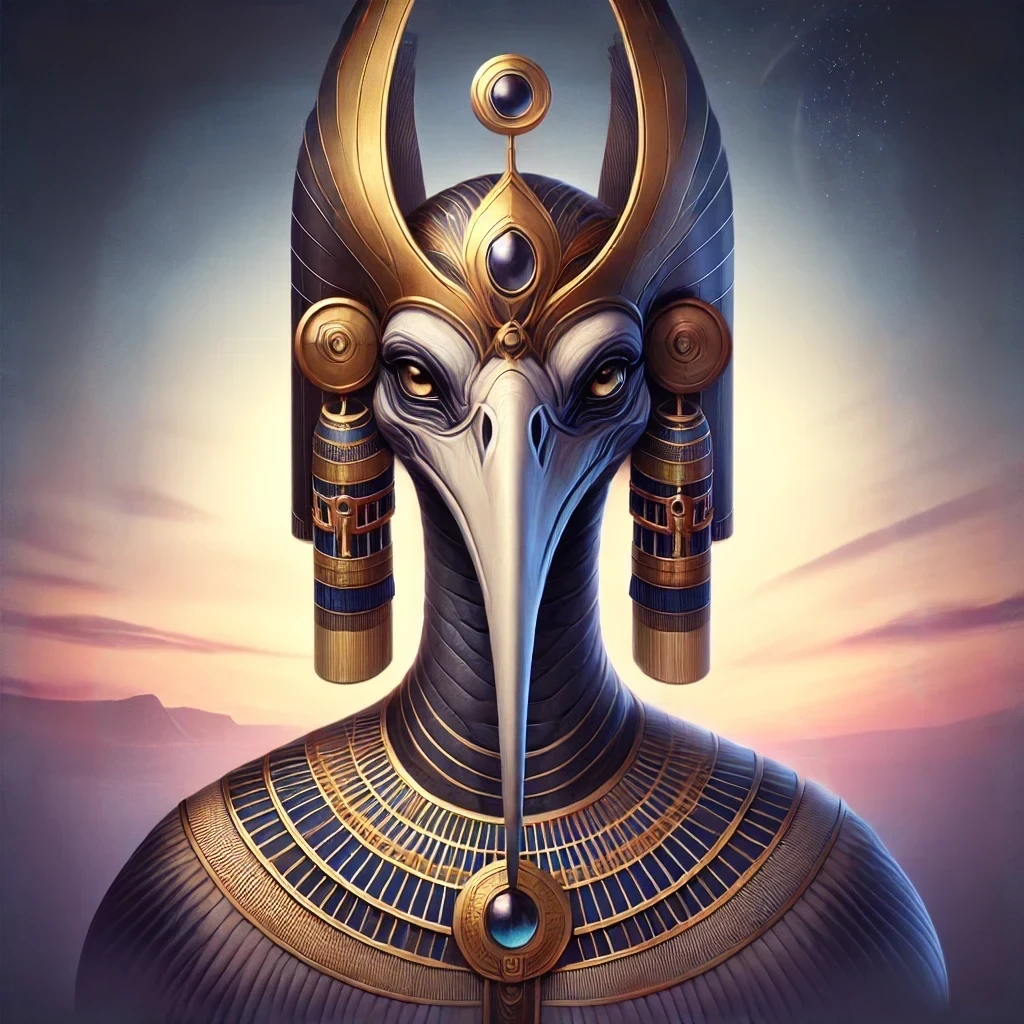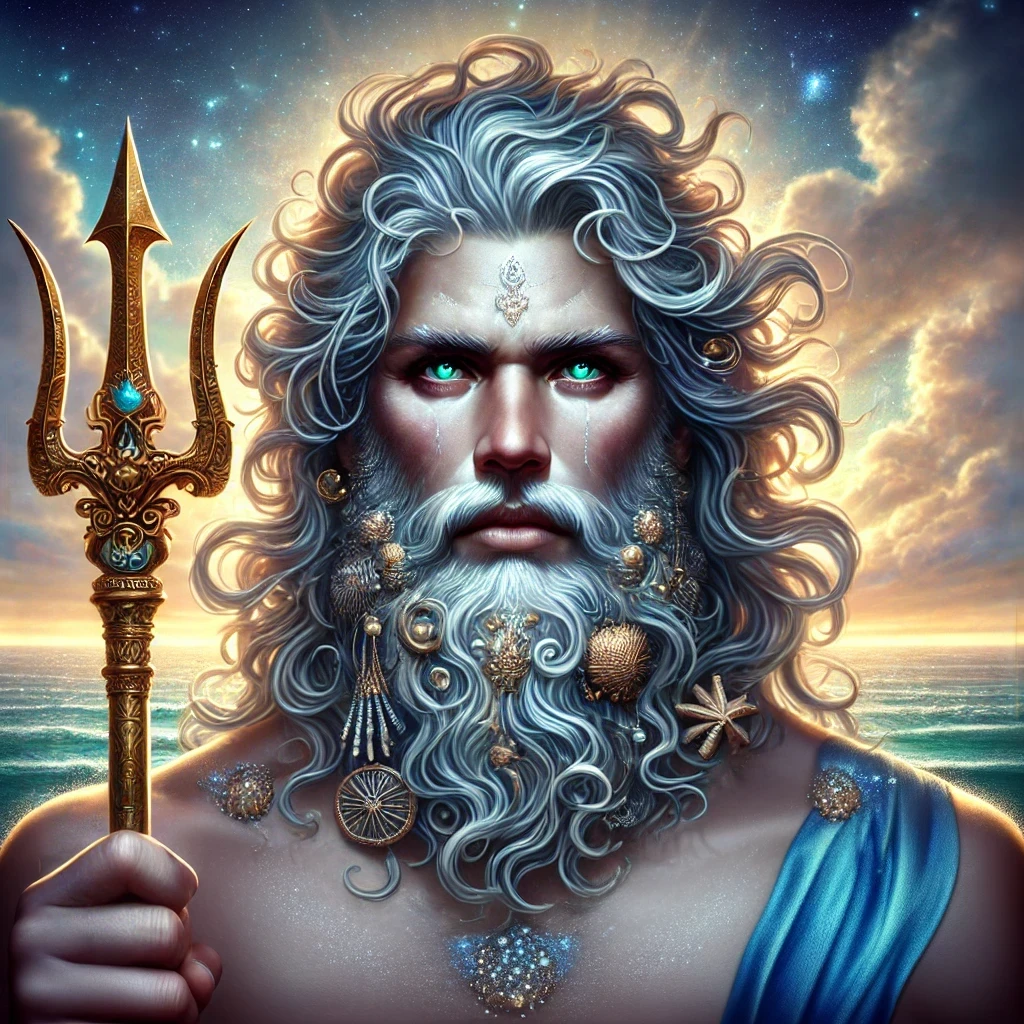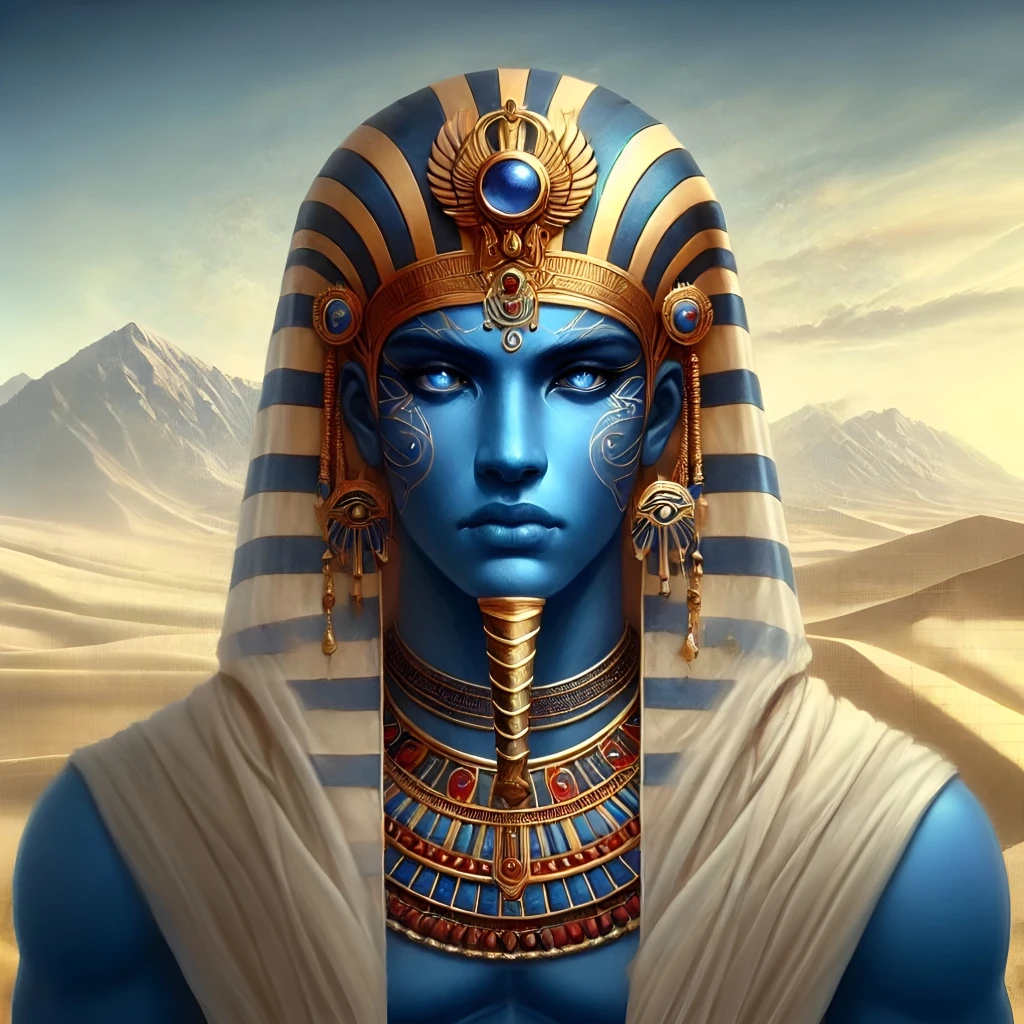Aker, an ancient Egyptian deity, presided over the horizon and served as a guardian of the underworld. Depicted as a pair of reclining lion-like figures facing opposite directions, this entity symbolized the meeting point between day and night, as well as the threshold between life and death. The name derives from the Egyptian word “ḥq3r,” meaning “horizon” or “that which is beneath,” signifying a liminal force between the earthly and the netherworldly. Also referred to as “Akeru” in plural form, the deity bore titles such as “Guardian of the Western and Eastern Horizon” and “He Who Binds the Earth.”
Origins
Prehistoric and Early Dynastic Roots
References to the guardian of the horizon emerge in the earliest phases of Egyptian religious thought. The concept of a protective force at the meeting of day and night can be traced to prehistoric iconography depicting dual lions or other feline forms facing opposite directions. By the Early Dynastic Period, this motif appeared in symbolic representations of balance, protection, and the cyclical nature of time.
Development in the Old Kingdom
During the Old Kingdom (c. 2686–2160 BCE), the role of Aker was solidified in Pyramid Texts, where he was invoked to safeguard the deceased as they journeyed through the underworld. These texts depict him as both a physical barrier and a benevolent force aiding the transition from one state of existence to another. As Egyptian funerary practices evolved, so too did his role, becoming an integral part of protective magic in tombs and burial sites.
Middle and New Kingdom Expansions
The Middle Kingdom (c. 2055–1650 BCE) saw the incorporation of this being into funerary literature such as the Coffin Texts. By the New Kingdom (c. 1550–1070 BCE), Aker’s role expanded beyond mere guardianship; he was depicted actively restraining chaotic forces that sought to disrupt cosmic balance. His protective aspect was further reinforced in the Book of the Dead, where he was depicted as a crucial guide ensuring the safe passage of souls through the treacherous underworld.

Appearance
Iconography and Artistic Depictions
Most commonly, the sentinel of the horizon took the form of two recumbent lions placed back-to-back, sometimes linked by a sun disk. In some artistic variations, a single lion with a double head facing east and west replaced the dual-lion representation. This imagery was frequently inscribed on sarcophagi and tomb walls to signify the transition between life and death.
Variations Across Periods
While Old Kingdom depictions emphasized feline imagery, later periods occasionally portrayed the guardian with human attributes or incorporated serpentine elements to reflect his chthonic nature. Some variations also included hieroglyphic inscriptions that identified him with the earth itself. In Ptolemaic representations, he was sometimes depicted as part of a composite deity alongside other protective entities of the underworld.
Abilities
Guardian of the Horizon
As a gatekeeper of the eastern and western horizons, this deity prevented malevolent forces from crossing between the realms of the living and the dead. His role was essential in maintaining cosmic order, ensuring that the balance between life and death remained undisturbed.
Restrainer of Chaos
One of his primary functions was to restrain Apophis, the serpent of chaos, ensuring that the solar barque of Ra could continue its journey unimpeded through the night sky. This protective function was often invoked in royal funerary texts, with pharaohs seeking his aid in overcoming the trials of the afterlife.
Healer and Protector
Some inscriptions attribute protective and healing abilities to the deity, particularly in shielding the deceased from supernatural threats during their passage through the underworld. His presence in funerary amulets reinforced his role as a safeguard against misfortune and dark forces.
Myths
Aker and Ra
The Sun God Ra relied on the guardian of the horizon to open the gates of the underworld each evening and seal them at dawn. This process ensured the daily cycle of death and rebirth central to Egyptian cosmology. Without this transition, the sun would fail to rise, plunging the world into eternal darkness.
Role in the Journey of the Dead
The deceased were required to pass through the domain of the horizon-watcher in their journey to the afterlife. Funerary texts describe how Aker questioned and tested souls before granting them passage. His dual lion form symbolized the passage through time, reinforcing the cyclical nature of existence.
Symbolism
Cosmic Balance
By marking the transition between night and day, he embodied equilibrium, order, and continuity within the cosmic cycle. His role extended beyond the individual, affecting the universe itself by ensuring the integrity of divine cycles.
Sacred Objects and Elements
Associated with the horizon and earth, Aker’s symbols included the akhet (horizon) glyph, lion figures, and the sun disk. His sacred numbers were two (reflecting duality and balance) and twelve (linked to the hours of day and night). Certain minerals, particularly ochre and sandstone, were considered linked to his presence due to their connection with desert landscapes.
Protective Amulets
Amulets bearing his image were used in tombs and burial sites to guard the deceased against dangers in the afterlife. These charms were often inscribed with spells invoking his protection against spirits and negative forces seeking to harm the soul’s journey.
Worship
Absence of Dedicated Temples
Unlike other major deities, this guardian lacked dedicated temples. Instead, his presence was invoked in tomb inscriptions and boundary stelae, reinforcing his protective role.
Rituals and Incantations
Priests recited protective spells invoking Aker’s aid to secure safe passage through the netherworld. Some rituals involved offerings left at sunrise and sunset as a means of appeasement. His name was frequently invoked in spells aimed at warding off misfortune.
Funerary Practices
Tombs frequently contained representations of the dual-lion deity as a means of ensuring the deceased’s transition into the afterlife remained uninterrupted. Statues of his form were sometimes placed at tomb entrances to act as sentinels.
Associations
Connection with Geb
As an earth-associated deity, he shared affinities with Geb, the god of the ground and fertility, though his functions were more defensive and liminal in nature.
Role Alongside Shu and Tefnut
Some mythological interpretations placed Aker alongside Shu (air) and Tefnut (moisture), reinforcing the idea that he governed the boundary where these elements met. His connection to the elements extended his significance beyond the horizon to cosmic balance.
Relationship to Apophis
Though primarily a force for order, he was also linked to Apophis due to his role in restraining chaos, reflecting a dualistic nature of both opposition and control.
Legacy
Decline in Influence
As Egyptian religious practices shifted toward greater emphasis on personal piety and temple cults, deities associated primarily with boundary roles faded in prominence. The protective aspect of the horizon-watcher was increasingly subsumed into the functions of later gods like Anubis and Osiris.
Survival in Later Texts
Despite diminished worship, the name persisted in Greco-Roman texts, where it was equated with similar guardian figures found in Mediterranean and Mesopotamian mythologies.
Influence on Modern Symbolism
The dual-lion motif associated with the sentinel of the horizon remains a powerful symbol of balance and protection, reflected in modern esoteric traditions and architectural designs incorporating guardian figures at thresholds.
Trivia
- Uncommon Representation: Unlike most Egyptian deities, Aker is rarely depicted in human form, emphasizing his unique role as a personification of the horizon.
- Earliest Mentions: His name appears in the Pyramid Texts, making him one of the earliest recorded deities in Egyptian mythology.
- Healing Powers: He was invoked in remedies for venomous bites, showcasing his protective and restorative attributes.
- Symbol of Unity: The dual-lion motif has inspired symbols of unity and balance in later cultures.
- Underworld Threshold: His guardianship of the boundary between life and death symbolizes the impermeable nature of cosmic order.



